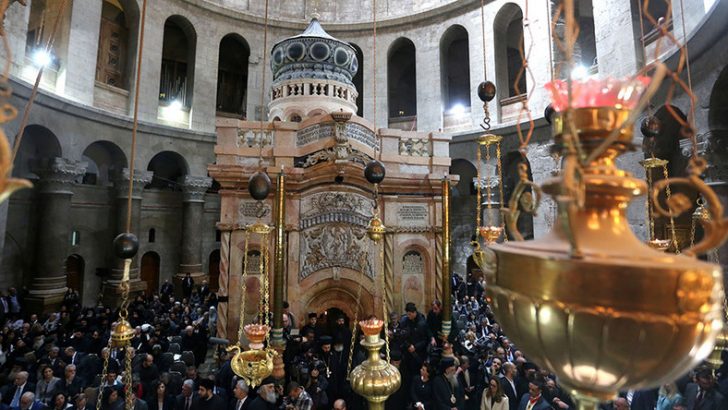Restoration work on the tomb of Jesus in Jerusalem’s Church of the Holy Sepulchre will be completed in time for the celebration of Easter Sunday, April 16, it has been announced.
Following nine months of refurbishment on the Edicule sitting atop the central site of the Christian world, the National Technical University of Athens, which has led the restoration project has announced that its work is nearly complete and that the Edicule is now stabilised. Authorities for the Holy Sepulchre have revealed that an ecumenical celebration to mark the official end of work will take place on March 22.
Damaged by years of water seepage and an earthquake in 1927, the Edicule – itself dating from at least 1555 – was braced by the British authorities in 1947, offering the stone and metal look that has been the facade of the site ever since. This changed at the end of February when the old metal braces were at last removed, returning the Edicule to its former glory.
The nine-month restoration saw an historic moment last November when, for a brief period, the covering slab of the actual tomb within the Edicule was lifted for a brief period in order to offer researchers access towards assessing the extent of damage caused across the years. Witnessed by just a handful of figures at the time, the moment was captured on camera by a team from National Geographic as part of what will become a television documentary on the project.
With the Edicule and tomb secured, the Athens team now turns its attention to the surrounding floor space.
“Under the Edicule there are excavations, tunnels, sewage and groundwater, and [all are] rising up and threatening the structure. The foundations must be stabilised,” said Prof. Antonia Moropoulou, the Athens team leader.
The next phase of work will see the existing drainage system excavated and repaired.


 The Edicule pictured after the removal og the 1974 steal braces
The Edicule pictured after the removal og the 1974 steal braces 